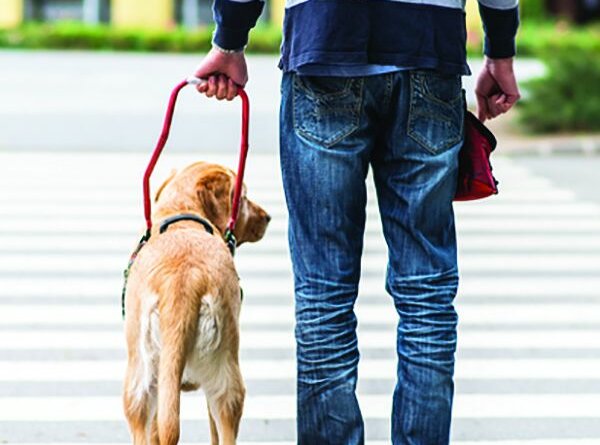Intelligent Disobedience – Whole Dog Journal
Sometimes, we don’t want a dog to do what we just told the dog to do. Intelligent disobedience, also known as intelligent refusal, is a concept held dear by those who train service dogs, especially guide dogs for the visually impaired. These dogs are taught to use their own judgment and not respond to the cue of their blind human if it’s not safe to do so. For example, if given the cue to cross the street but there is traffic coming, the dog is expected to decline to move forward no matter how strongly the handler urges the dog forward.
HOW IS IT TAUGHT?
Twenty or30 years ago, this behavior was taught using aversives. The trainer carried a cane and would rap sharply on an obstacle to alarm the dog into avoidance behaviors. Dogs were walked into moving cars to teach them to stop for oncoming traffic. Not surprisingly, there was a high dropout rate in those training programs. Fortunately, times have changed. Most modern service-dog training programs incorporate science-based positive reinforcement training, and the dropout rate has plummeted.
Dogs are initially taught behaviors such as “move forward” with a reward marker (such as the click of a clicker, which signals the dog that she has done something that will result in a treat) followed by the delivery of a treat. Once the dog reliably responds to the cue to move forward, she can be taught to refuse to respond to that cue in certain situations.
When the “move forward” behavior is very solid, obstacles such as barriers, ditches, drop-offs, and low-hanging signs or branches are introduced. The dog is cued to move forward, but the reward marker and a treat are delivered before she can take even a single step. The handler then touches the obstacle with a hand to create an association with the click/treat and the behavior of not-moving, then encourages the dog to find a way around the obstacle.
When the dog reliably disobeys in the presence of obstacles, more difficult challenges are introduced, such as narrow passageways and eventually traffic.
Self-preservation likely plays a role here. A dog doesn’t want to bump into a barrier, step off a cliff, or get hit by a car any more than you do! But in other cases, the dog must be able to view the obstacle from the human’s perspective; this is the very cognitive piece of this behavior. The dog could easily walk under a hanging sign or a tree branch, but how low is too low for the dog’s handler to pass under? How narrow is too narrow a passage for the human, even though the dog could easily pass through? How much of a ledge is too high for the handler to step off? The dog must be able to understand all of this.
Amazingly, guide-dog trainers report that this skill has no effect on the dogs’ willingness to respond reliably to the “go forward” cue when there’s not an obstacle. The dogs readily understand that the refusal response is expected and accepted only when there is a potential hazard in the path. That’s some impressive cognitive thinking!
REFUSAL AT HOME?
As recognition of canine cognition expands, there is growing acceptance of the non-service dog’s option to sometimes say, “No.” If we understand why our dog may choose to decline to respond to our behavior requests, we can either respect her choice and not ask her to do that behavior, or, as the supposedly more intelligent species, we can figure out how to get her to willingly and happily do what we want or need her to do, without the use of fear or coercion.
Our appreciation for intelligent disobedience, whether in service dogs or our own canine family members, is a sign of our growing respect for the dogs who are such an important part of our lives.




